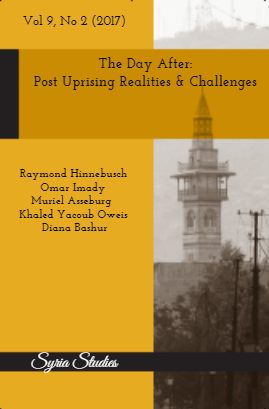Syria’s Reconciliation Agreements
Main Article Content
Abstract
In Syria’s Reconciliation Agreements, Raymond Hinnebusch and Omar Imady explore how the regime and the opposition interacted with the evolving idea of musalahat or ‘reconciliations’. At first, when neither side could unseat the other, these reconciliations were in essence, truces which reflected the war of attrition. As the regime grew stronger, largely after the Russian intervention, the musalahat evolved into several more advanced types, all designed to break the rebels, yet significantly different in the extent to which the regime was willing to agree to a more balanced arrangement. Hinnebusch and Imady proceed to examine the more recent, and internationally sanctioned, ‘deconfliction zones’ and show how they are similar, and different, from previous arrangements. The critical trademark of all of this, from a governance perspective, is the fact that all these arrangements entail, in various degrees, the decentralisation of government authority. The paper ends with the ironic conclusion that the Syria that may emerge from all this extensive decentralisation may resemble in certain ways the very Syria the protesters back in 2011 were advocating.
Article Details

This work is licensed under a Creative Commons Attribution 4.0 International License.
Authors who publish with this journal agree to the following terms:- Authors retain copyright and grant the journal right of first publication with the work simultaneously licensed under a Creative Commons Attribution License that allows others to share the work with an acknowledgement of the work's authorship and initial publication in this journal.
- Authors are able to enter into separate, additional contractual arrangements for the non-exclusive distribution of the journal's published version of the work (e.g., post it to an institutional repository or publish it in a book), with an acknowledgement of its initial publication in this journal.
- Authors are permitted and encouraged to post their work online (e.g., in institutional repositories or on their website) prior to and during the submission process, as it can lead to productive exchanges, as well as earlier and greater citation of published work (See The Effect of Open Access).
